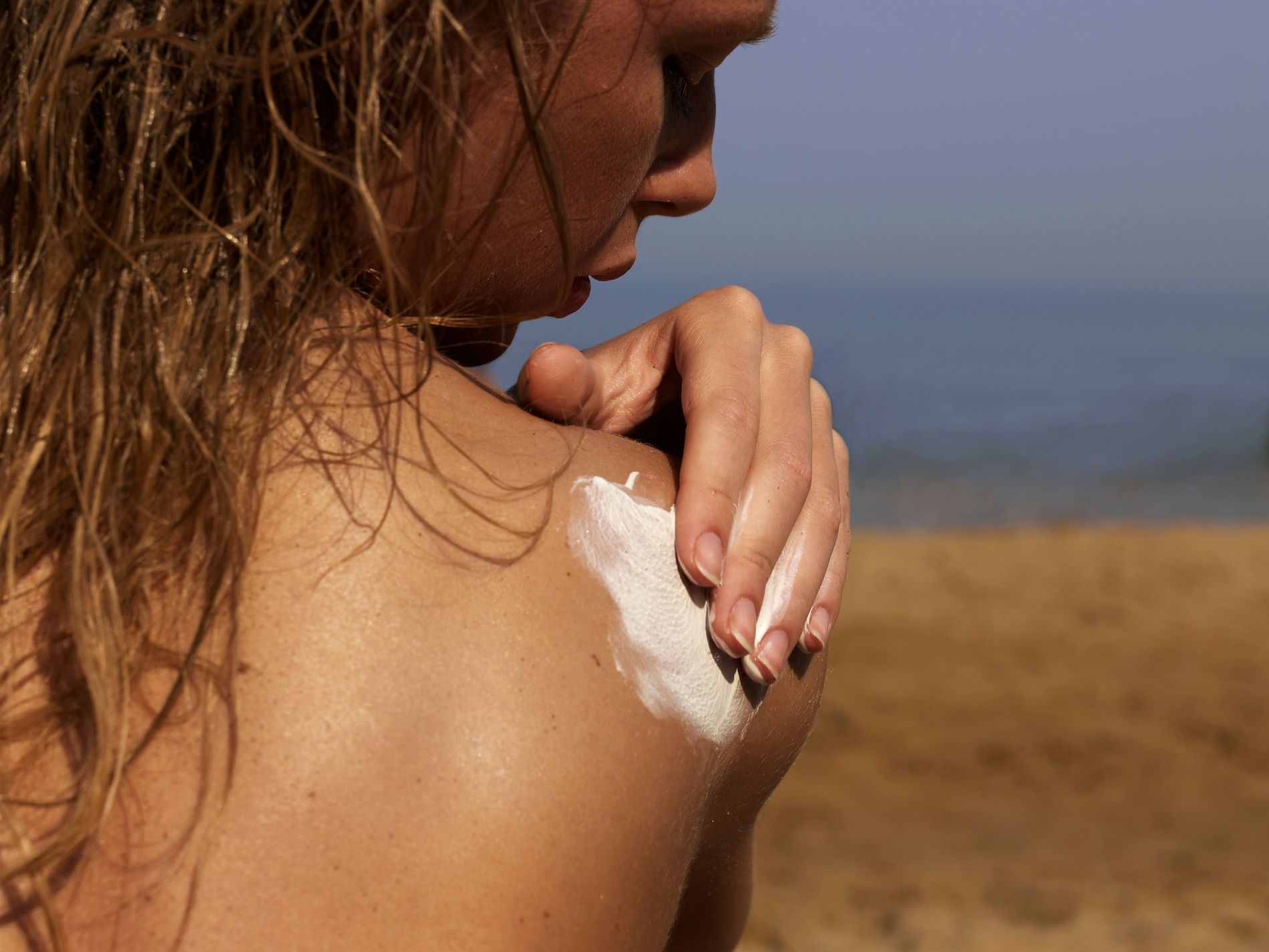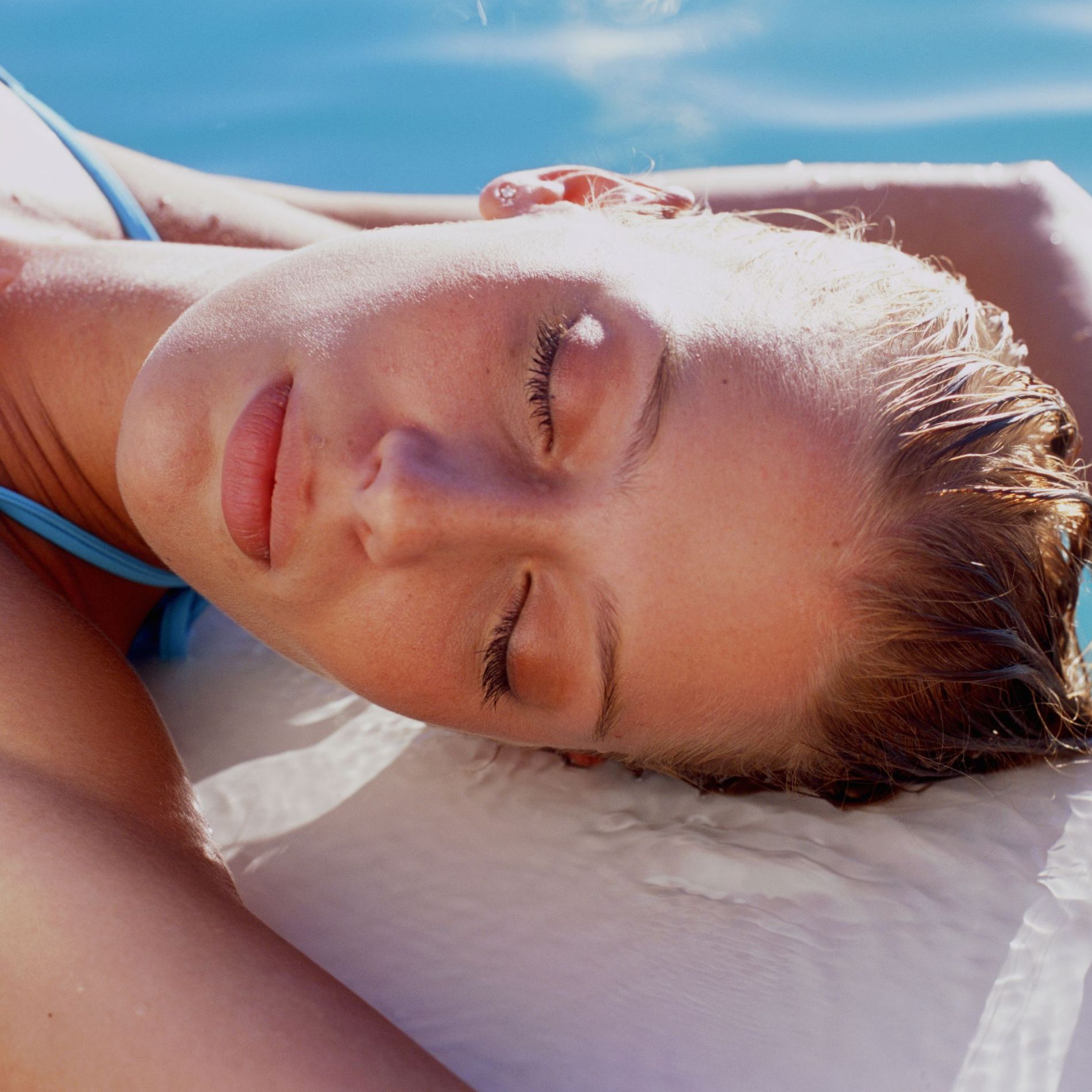The science behind sunscreen can be complicated. Here's a breakdown of exactly what you need to know to protect your skin
All products featured on Vogue are independently selected by our editors. However, when you buy something through our retail links, we may earn an affiliate commission.
It’s officially the season for basking in the sun so, no matter your skin tone, using SPF is crucial. But we'll be the first to admit the products and jargon on offer in the sunscreen aisle are confusing.
Cutting through all the noise, the main thing you need to know is that the sun emits two types of ultraviolet (UV) radiation that reach our skin: ultraviolet A (UVA) and ultraviolet B (UVB). So look for the words ‘broad spectrum’ on your sunscreen first and foremost as it will protect against both. “UVA and UVB rays damage unprotected skin, but how they go about doing that differs,” says Paula Begoun, founder of Paula’s Choice skincare.

Getty.
What is the difference between UVA and UVB?
UVB rays have a short wavelength, are strongest in summer and are the chief cause of sunburn and cancers. However, the longer wavelength of UVA rays has a greater ability to deeply penetrate skin and lead to premature ageing. “UVA light, also known as long-wave light, accounts for about 95 per cent of the UV light that reaches our skin," says Begoun. "Although both UVA and UVB are bad for skin, UVA rays are more of a threat because a much larger percentage of them reach earth’s surface. They’re present all day long, year-round, even when it’s cloudy.”
New research by La Roche-Posay has also identified another UVA threat known as 'long UVA' rays – which make up 30 per cent of the UV spectrum – and are able to penetrate deeper than both UVB and regular UVA rays. Consequently, they cause more significant damage in the form of wrinkles, pigmentation, slack skin and, in extreme cases, more aggressive skin cancers such as melanomas.
One more crucial difference: UVA rays can penetrate glass, says consultant dermatologist Dr Hiva Fassihi. "UVB is blocked by glass but UVA rays travel through it, deep into the skin," she warns. "If you're working by a window, you're still at risk of UV damage so it's important to also wear an SPF indoors."
How to decipher your sunscreen's description
The SPF measurement on your sunscreen refers specifically to the UVB protection level. SPF15 guards against 93 per cent of UVB rays, SPF30 protects against 97 per cent, and for SPF 50, it's about 98 per cent.
The UVA protection isn’t technically represented by the SPF number on the bottle, but the higher your broad spectrum SPF, the greater the UVA protection. Another option is K-Beauty sunscreens such as Thank You Farmer Sun project Water Sun Cream SPF50, which not only boasts a lightweight, serum-like consistency but also a PA (Protection Grade of UVA Rays) rating in addition to the standard SPF. This number measures how much UVA a person can be exposed to without tanning and ranges from PA+ to PA++++; the higher the number of plus signs the greater the level of protection against UVA rays.
Both UVA and UVB rays damage unprotected skin, but how they go about doing that differs.
Paul Begoun
To be amply protected against both UVA and UVB rays, skin experts including Dr Fassihi advise wearing a sunscreen of SPF30 or above year-round, even on cloudy days, which also takes human error into consideration. It's estimated that people typically only apply 25 to 50 per cent of the rated amount of sunscreen. "Most people don't apply sunscreen liberally enough, which means you won't be getting the SPF protection shown on the label," says Begoun, adding that a high broad spectrum SPF, applied every two hours, is the answer.
Good options to try include Woods Copenhagen Body Sun Lotion SPF50, Gun Ana UV Body Mist SPF30 and La Roche-Posay UVMUNE 400 SPF50+, which contains a new filter known as Mexoryl 400 to shield against all rays including long UVA.
